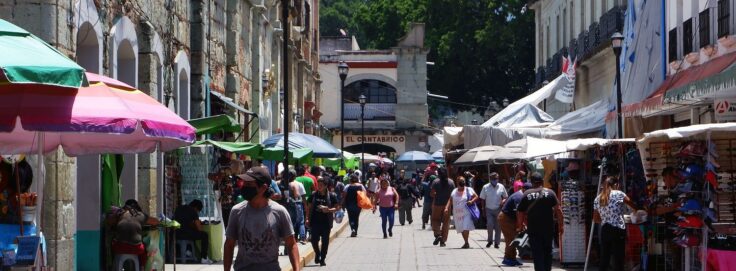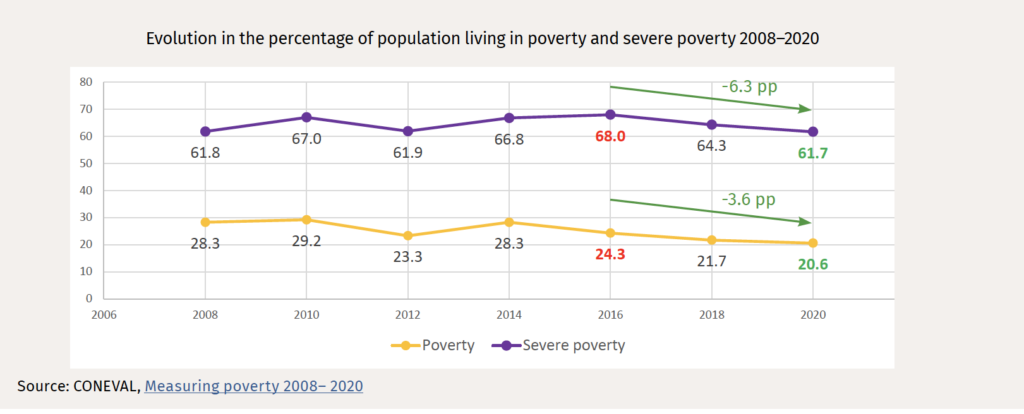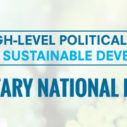
Search
Oaxaca: the largest decline of multidimensional poverty and extreme poverty in a decade

In 2021, Mexico’s National Council for the Evaluation of Social Development Policy (CONEVAL) presented the results of the most recent multidimensional measurements of poverty at the state and municipal levels for 2020. As far as the results of state poverty are concerned, this is the second measurement made during the administration of Governor Alejandro Murat Hinojosa.
The results of these estimations are both revealing and interesting. Even though Oaxaca has suffered devastating natural disasters in recent years, like an earthquake in 2017 in the Isthmus of Tehuantepec (resulting in more than 63,000 homes, schools, and hospitals damaged), as well as being hit by hurricanes, droughts, and the COVID-19 pandemic, this Mexican state has seen the largest reduction in poverty, as well as severe poverty, in the last decade.
CONEVAL’s results show that between 2016 and 2020, 90,684 people were lifted out of poverty, and 88,880 out of severe poverty. In the following graph, we can see the evolution of poverty and severe poverty in Oaxaca since 2008, when CONEVAL started the multidimensional measurement of poverty.
It is important to mention that improvements were observed in four of the six social deprivations by which CONEVAL measures poverty. There were also substantial advances in the population with incomes below the income poverty line, and in the population with incomes below the severe income poverty line.
Contrary to country’s national trends, that unfortunately show a growth in poverty and in severe poverty, Oaxaca can tell a different story to the world. What did we do differently? Why does Oaxaca present this significant decrease? These results are a consequence of a strategy to combat poverty, described extensively in my previous article, and I would like to highlight, due to their importance, these five lines of action:
1) Strategic planning through quantitative and qualitative diagnoses
Quantitative diagnostics
By using the results of the multidimensional measurement of poverty at the municipal level in 2015, we developed diagnoses that allowed us to accurately identify the most pressing social deprivations and sub-deprivations.
Qualitative diagnostics
In collaboration with academic institutions and research centres, we developed qualitative studies to understand the causes of poverty and establish effective interventions in coordination with federal agencies.
2) Geolocation of social deprivations
To focus support at the municipal level, we developed interactive maps that showed the degree of concentration of the population or homes for a group of social sub-deprivations at both street and neighbourhood levels.
3) Focusing actions by targeting State Public
Investment
Based on the data generated with quantitative and qualitative diagnoses, as well as the maps of social deprivations, we targeted public state investment to implement priority and permanent actions with a focus on the municipal level.
4) Inter-institutional coordination
The Governor of the State set up the Committee of Attention for the Reduction of Social Deprivations, with which we developed an interinstitutional coordination scheme between the three levels of government (Federal, State, and Municipal governments), allowing the inclusion of academia, the private sector, and civil society for executing programmes and actions oriented to social development.
5) Digital tools for monitoring and evaluation
To monitor compliance with the goals of the social programmes and actions, we created the System of Georeferencing for Social Development Policy (S-GPS), which is a public-access platform that houses the Single Register of Beneficiaries, georeferencing the interventions of the State Government.
In this way, CONEVAL’s data confirm that in Oaxaca we have drawn a suitable strategic route to address the deficiencies of Oaxacans, contributing to reducing poverty and severe poverty in our State. Thus, in the State Government, through the Secretary of Welfare, we continue working in order to leave no one behind, and to transform the global from the local.
This article was published in Dimensions 14


















